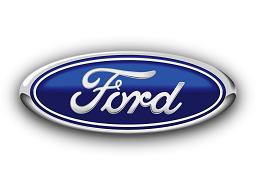GM, Ford offer zero per cent finance, incentives to bolster car sales news
In the wake of US administration’s strict order to perform or cease to exist, carmakers Ford Motor Co and General Motors Corp are offering new incentive plans to push up sales and boost customer confidence.
Ford on Tuesday said it will offer zero per cent financing through its subsidiary and cover payments for up to 12 months on any new Ford, Lincoln or Mercury vehicle if customers lose their jobs. The offer will run through 1 June.
Immediately after, GM came out with a new plan that offers payment protection for the first 24 months of ownership. If a buyer loses his income, the company will make up to nine months’ worth of payments for up to $500 a month. GM will also help protect the retail value of a new vehicle at trade-in time for a customer’s next GM vehicle.
Chrysler and Hyundai have been offering zero per cent financing, along with rebates, employee pricing and discounts of up to $6,000 since January as it looked to clear out dealers’ inventories and boost sales. However, the incentives appeared to provide little boost to sales.
The US administration has also come up with several incentives to woo customers. President Barack Obama in a television show said the warranty will now be safer than it’s ever been, because starting today, the US government will stand behind your warranty. The administration is also exploring ways to provide tax credits or vouchers for people who trade in older gas guzzlers for new cars.
And the Internal Revenue Service on Monday began touting a tax break introduced last month that allows some car buyers to deduct from their income taxes the sales and excise taxes on purchases made by the end of the year.
Auto makers are expected to show another steep decline in March sales as consumers worry about weak economic conditions and reduced credit availability. US auto sales, which fell 41 per cent in February, have dropped to their lowest levels in more than a quarter century.
GM’s 2-day old chief executive Frederick Henderson said at a press conference that no auto maker can be successful in the US marketplace that has annual sales in the range of 9.5 million vehicles. As such, they need to take steps to ”bring customers back into the equation.”
”It’s about confidence, credit and employment. What we tried to do is deal with all three of those things in a well-structured programme,” said Henderson, who took over as CEO on Monday replacing Rick Wagoner, who was shown the door by the Obama administration.
Mark LaNeve, GM’s vice president of sales and marketing for the Americas, said the government ‘supported’ the new financing initiative as part of its commitment to fund the auto maker for 60 days.
Ford vice president of sales and marketing Ken Czubay said on Tuesday the company wanted to help rebuild faith in the marketplace as consumers remain anxious about the economy.
In the face of recession, GM and its financing arm have received a total of about $19.3 billion tax payers’ money, while Chrysler and its financing arm have received about $5.5 billion.
New survival kit for carmakers
Obama on Monday, using the threat of bankruptcy as a weapon, vowed to transform the US auto industry by pushing GM and Chrysler to make major changes in exchange for billions in additional taxpayer money they need to survive.
The administration has given GM 60 days and ”adequate working capital” to produce a better restructuring plan, and Chrysler 30 days to work out a deal with Fiat or another partner.
Setting aside doubts that the administration is trying to nationalise the industry Obama said, “let me be clear — the US government has no interest in running GM. What we are interested in is giving GM an opportunity to finally make those much-needed changes that will let them emerge from this crisis a stronger and more competitive company.”
Administration officials said a quick, government-led bankruptcy would be a last resort. But if it comes to that, they said, the court process could be used to separate the companies’ good assets from the bad. The good assets would form stand-alone companies to survive or be sold; the bad assets would be eliminated.
The administration is forcing Chrysler into the arms of Italian automaker Fiat after the president’s auto task force determined that Chrysler was not viable as a stand-alone company.
Under the revised terms of a proposed alliance between Chrysler and Fiat, the Italian company would take an initial 20-per cent stake in the US auto maker, down from 35 per cent stake agreed to under its January pact.
Fiat has been in negotiations with the Obama administration’s task force, and the government said on Monday that Fiat is viewed as the only route to survival for Chrysler.
“We believe we will arrive at a result that will establish a credible future for this crucial industrial sector,” Fiat Chief Executive Officer Sergio Marchionne said in a statement.
If Fiat and Chrysler reach a definitive alliance agreement, the government would consider investing as much as $6 billion more in Chrysler.
“We cannot, and must not, and we will not let our auto industry simply vanish,” Obama said, adding that its survival can’t depend “on an unending flow of taxpayer dollars,” and “these companies must ultimately stand on their own, not as wards of the state.”
GM lost $30.9 billion in 2008 and sold 23 per cent fewer cars from 2007 to 2008. Chrysler, a smaller company, lost $8 billion and sold 30 per cent fewer cars.
Ford, the other part of the ”big three” US automakers, is better off and says it does not need government help to survive.
Sourced via domain-b.com








